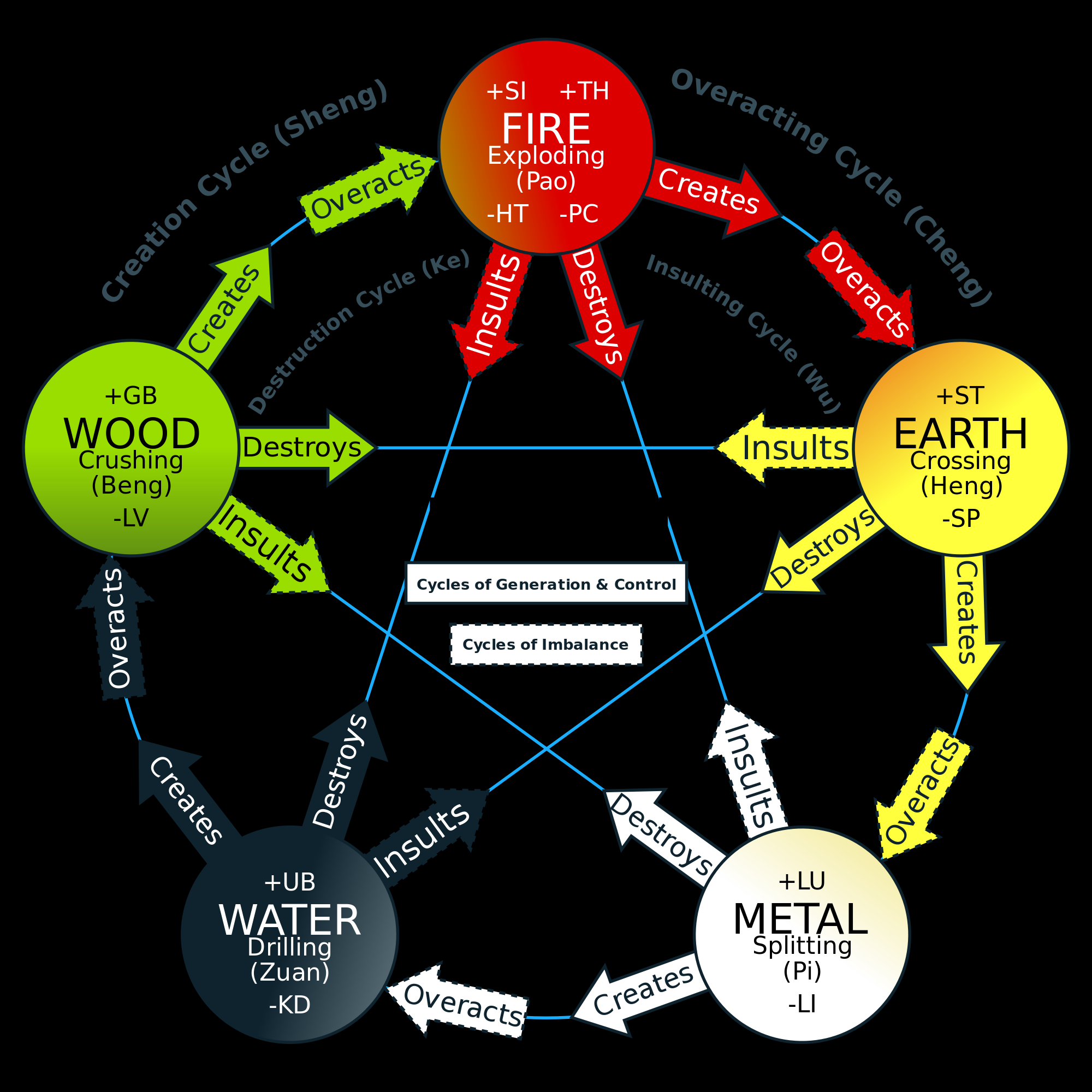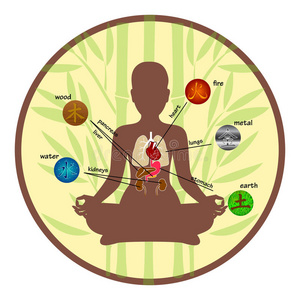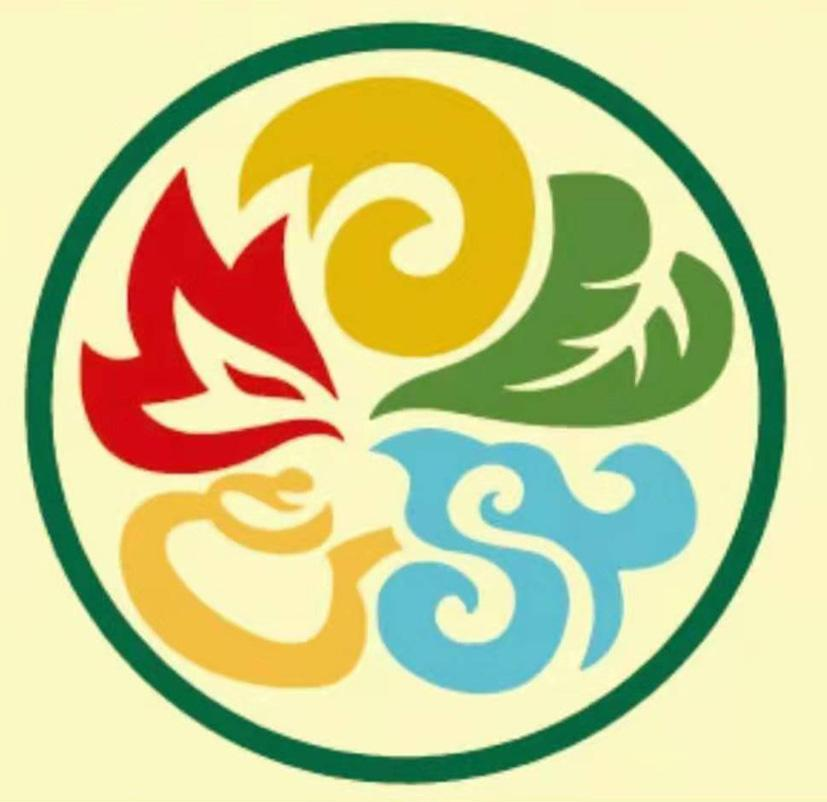The Five Elements (Wu Xing)
The Five Elements (Wu Xing): An In-Depth Exploration
The Five Elements, also known as Wu Xing, are fundamental concepts in ancient Chinese philosophy and natural science, representing five basic elements and forms of energy: Wood (木), Fire (火), Earth (土), Metal (金), and Water (水). These elements are not only symbolic of different natural phenomena but also serve to describe the characteristics, changes, and interrelationships of all things. The theory of the Five Elements is widely applied in various fields such as traditional Chinese medicine, feng shui, astrology, and more. Below is a comprehensive exploration of the Five Elements.
1. Basic Attributes of the Five Elements
- Wood (木): Represents plants and growth, symbolizing vitality and expansion. It corresponds to the east, the color green, and the season of spring.
- Fire (火): Represents flames and heat, symbolizing warmth and light. It corresponds to the south, the color red, and the season of summer.
- Earth (土): Represents the earth and stability, symbolizing nurturing and supporting qualities. It corresponds to the center, the color yellow, and the transitional season between summer and autumn.
- Metal (金): Represents metal and rigidity, symbolizing contraction and cutting forces. It corresponds to the west, the color white, and the season of autumn.
- Water (水): Represents water and fluidity, symbolizing nourishment and flow. It corresponds to the north, the color black or blue, and the season of winter.
2. The Generating (Mutual Promotion) Cycle
The generating cycle describes how each element promotes or generates another:
- Wood generates Fire: Wood feeds fire.
- Fire generates Earth: Fire turns into ash, which becomes earth.
- Earth generates Metal: Metal is found within the earth.
- Metal generates Water: Metal can conduct water, and melting metal yields liquid.
- Water generates Wood: Water nourishes plants.
3. The Overcoming (Mutual Restraint) Cycle
The overcoming cycle describes how each element restrains or overcomes another:
- Wood overcomes Earth: Roots of trees can penetrate and break through the earth.
- Earth overcomes Water: Earth can absorb and block water flow.
- Water overcomes Fire: Water extinguishes fire.
- Fire overcomes Metal: Fire can melt metal.
- Metal overcomes Wood: Metal tools can cut down trees.
4. The Five Elements and Seasonal Changes
Each element corresponds to a specific season, reflecting natural growth, decline, and transition:
- Wood: Spring – the season of growth and renewal.
- Fire: Summer – the season of flourishing and peak energy.
- Earth: Late summer or seasonal transitions – the stabilizing period that balances other seasons.
- Metal: Autumn – the season of harvesting and decline.
- Water: Winter – the season of rest and conservation.
5. The Five Elements and Directions
The Five Elements also correspond to the four cardinal directions and the center, influencing various aspects of feng shui and traditional practices:
- Wood: East – symbolizing life and vitality, associated with green.
- Fire: South – symbolizing warmth and energy, associated with red.
- Earth: Center – symbolizing balance and support, associated with yellow.
- Metal: West – symbolizing harvest and maturity, associated with white.
- Water: North – symbolizing depth and calm, associated with black or blue.
6. The Five Elements and Colors
The Five Elements are each associated with specific colors, which carry significant symbolic meanings in Chinese culture:
- Wood: Green, representing growth, life, and vitality.
- Fire: Red, representing passion, energy, and brightness.
- Earth: Yellow, representing the earth, stability, and nurturing.
- Metal: White, representing purity, the luster of metal, and the energy of contraction.
- Water: Black or blue, representing depth, tranquility, and coldness.

7. The Five Elements and Traditional Chinese Medicine
In Traditional Chinese Medicine (TCM), the Five Elements correspond to the human body's organs and functions, reflecting health and disease states:
- Wood: Liver and gallbladder, responsible for circulation and regulation of emotions, associated with tendons and vision.
- Fire: Heart and small intestine, responsible for blood circulation and mental state, associated with the tongue and complexion.
- Earth: Spleen and stomach, responsible for digestion and nutrient distribution, associated with muscles and lips.
- Metal: Lungs and large intestine, responsible for respiration and fluid distribution, associated with skin and voice.
- Water: Kidneys and bladder, responsible for reproduction and excretion, associated with bones and hearing.
8. The Five Elements in Feng Shui
In feng shui, the Five Elements guide the arrangement of spaces and objects to harmonize the environment and enhance well-being:
- Wood: Suitable for the east or southeast, where placing green plants can enhance wood energy, ideal for bedrooms or study rooms.
- Fire: Suitable for the south, where red or warm-toned decorations can enhance fire energy, ideal for kitchens or living rooms.
- Earth: Suitable for the center or southwest/northeast, where yellow, ceramics, or stone materials can enhance earth energy, ideal for dining rooms or entryways.
- Metal: Suitable for the west or northwest, where white or metal objects can enhance metal energy, ideal for offices or bedrooms.
- Water: Suitable for the north, where blue or water features can enhance water energy, ideal for bathrooms or relaxation areas.
9. The Five Elements and Astrology
In Chinese astrology, the Five Elements are used to analyze a person's destiny and life path through the interplay of the Heavenly Stems and Earthly Branches (known as Ba Zi or Four Pillars of Destiny):
- Wood dominant: Indicates creativity, ambition, and resilience, but may also suggest a need to manage emotions and impatience.
- Fire dominant: Indicates energy, passion, and leadership, but may require caution against impulsiveness or irritability.
- Earth dominant: Indicates reliability, stability, and practicality, but may also suggest a need to embrace change and adaptability.
- Metal dominant: Indicates decisiveness, courage, and independence, but may need to guard against rigidity or detachment.
- Water dominant: Indicates intelligence, adaptability, and communication skills, but may need to overcome indecisiveness or excessive caution.
10. The Five Elements and Time Management
The Five Elements can also be applied to time management, with different elements suggesting optimal times for various activities:
- Wood days (Spring): Ideal for learning, planning, and starting new projects.
- Fire days (Summer): Ideal for social activities, presentations, and showcasing oneself.
- Earth days (Transitional periods): Ideal for organizing, evaluating, and reflecting.
- Metal days (Autumn): Ideal for decision-making, executing tasks, and achieving goals.
- Water days (Winter): Ideal for resting, recharging, and introspection.
11. The Five Elements in Cultural Arts
The influence of the Five Elements extends to Chinese cultural arts, such as calligraphy, painting, and music:
- Calligraphy: Wood represents flowing lines, Fire represents vigorous strokes, Earth represents solid structures, Metal represents sharp angles, and Water represents smooth ink flow.
- Painting: In Chinese landscape painting, the Five Elements express harmony in nature—Wood’s vitality, Fire’s warmth, Earth’s stability, Metal’s sharpness, and Water’s fluidity.
- Music: The Five Elements correspond to the five tones in traditional Chinese music (Gong, Shang, Jue, Zhi, Yu), influencing the mood and structure of compositions.

Conclusion
The Five Elements theory is not just a philosophical concept but a holistic system deeply embedded in Chinese culture. It offers a framework for understanding and harmonizing the world, providing insight into health, personality, nature, and the cosmos. This systematic thinking has helped people find balance and harmony in all aspects of life, making it a cornerstone of Chinese wisdom and cultural heritage.





